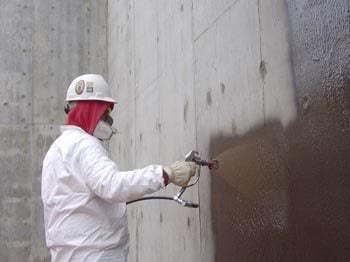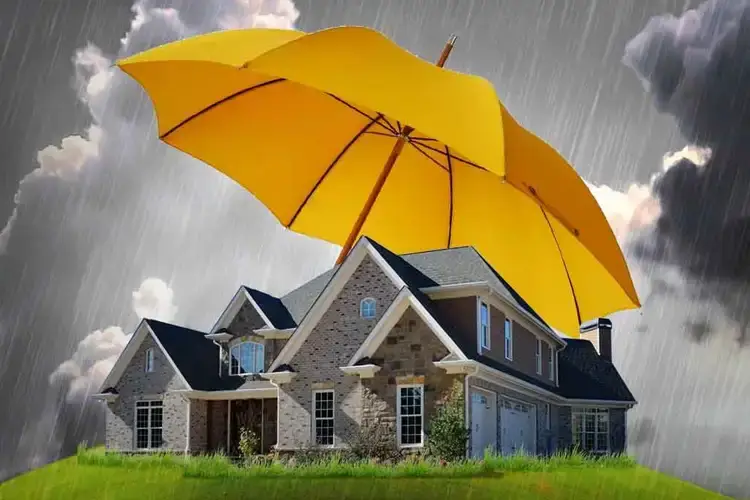The Role of Sump pump discharge drainage Omaha in Improving Water Flow
Kinds of Waterproofing: Checking Out the Numerous Techniques and Their Applications
Waterproofing is an essential aspect of building and construction and upkeep. It protects structures from the detrimental effects of water damages. There are numerous approaches readily available, each with its unique applications and advantages. From membrane systems to cementitious services, recognizing these options is crucial for efficient execution. The choice of waterproofing method can substantially influence longevity and longevity. Discovering these different strategies discloses their distinct benefits and potential obstacles, motivating additional factor to consider of ideal remedies.
Membrane Layer Waterproofing Solutions
Membrane layer waterproofing systems serve as an essential barrier against water intrusion in numerous structures. These systems commonly include slim sheets made from materials like rubber, thermoplastic, or bitumen, which are applied to surfaces to stop moisture penetration. They can be set up above or below quality and are particularly efficient in locations susceptible to high water exposure, such as basements, roofing systems, and foundations.The installment procedure involves cleansing the substratum, using adhesives or primers, and exactly suitable the membrane layer to ensure complete coverage. Membrane systems can be either completely adhered, mechanically affixed, or laid loose, depending upon the specific requirements of the project. They offer longevity and versatility, fitting architectural activities without jeopardizing their waterproofing capabilities. These systems can be reinforced with extra layers for enhanced security. Ultimately, membrane waterproofing systems are vital for protecting frameworks against water damage and maintaining long-lasting stability.
Liquid-Applied Waterproofing Coatings
Liquid-applied waterproofing finishings supply a flexible option for shielding surface areas from water infiltration - Water Solutions Omaha. These finishes contain fluid materials that, when used, develop a smooth, flexible membrane layer. Their adaptability allows for application on different substrates, including concrete, steel, and timber. The coverings can be utilized in varied atmospheres, from domestic to commercial setups, making them suitable for roofing systems, foundations, and below-grade structures.One considerable advantage of liquid-applied finishes is their ability to adapt uneven shapes and permeate splits, developing a robust barrier against dampness. They usually show outstanding adhesion buildings and resistance to UV radiation, ensuring durability and durability. Furthermore, the application procedure is normally simple, permitting quick installment and minimized labor expenses. This approach also reduces the threat of water merging, as the continual layer properly guides water far from prone areas. On the whole, liquid-applied waterproofing finishings are an effective option for extensive water defense
Cementitious Waterproofing Solutions

Cementitious waterproofing services offer a robust option for frameworks needing reputable dampness protection. These systems largely make use of a blend of cement, sand, and chemical ingredients to create a water-proof obstacle. They are typically put on surface areas such as concrete wall surfaces, foundations, and floors, supplying a resilient, lasting defense against water intrusion.One of the essential advantages of cementitious waterproofing is its simplicity of application; it can be applied using a brush, roller, or spray, making it suitable for different job dimensions. Additionally, this approach works with Learn More several surfaces and can frequently be utilized in conjunction with other waterproofing techniques.Cementitious remedies are specifically reliable in environments where water direct exposure is an issue, such as basements or below-grade frameworks. Their excellent bond buildings ensure that they bond well with substratums, offering a solid and impenetrable layer against wetness infiltration.
Bentonite Waterproofing
Bentonite waterproofing is a very reliable approach that utilizes sodium bentonite clay to create a natural obstacle against water. This method manipulates the distinct homes of bentonite, which increases upon contact with water, sealing any kind of possible leaks and stopping dampness infiltration. It is typically made use of in numerous applications, including structure walls, passages, and retaining wall surfaces, where water resistance is essential.Bentonite can be applied in several kinds, such as panels or blankets, providing adaptability in installation. Its capacity to self-seal makes it an attractive choice for locations subject to shifting soil or fluctuating water levels. Furthermore, bentonite waterproofing is ecologically pleasant, as it is an all-natural material that does not introduce unsafe chemicals into the environments.
Drain and Outside Waterproofing Systems
Effective waterproofing commonly entails a mix of strategies, including drain and external systems. Drain systems, such as French drains and sump pumps, are created to reroute water away from structures, reducing hydrostatic pressure versus structures. These systems are vital in protecting against water build-up that can result in architectural damage and mold growth.External waterproofing, on the various other hand, includes applying protective barriers to the building's outside. Strategies such as the installation of waterproof membranes, coatings, or sealants can help protect against water infiltration. This approach not just protects the foundation but additionally improves the general sturdiness my sources of the structure.Together, drain and external waterproofing systems create a detailed remedy to manage water properly. By implementing these approaches, homeowner can guard their financial investments versus the harmful results of dampness, making certain lasting stability and security for their buildings.
Regularly Asked Inquiries
How Do I Pick the Right Waterproofing Approach for My Project?
Picking the best waterproofing approach depends on variables such as project kind, environmental conditions, spending plan, and desired durability. Examining these elements enables notified choices customized to particular demands and demands.

Can Waterproofing Be Applied in Winter Issues?
Waterproofing can be applied in winter conditions, but it requires certain products and methods. Cold temperature levels may influence healing times and bond, necessitating mindful choice of items developed for low-temperature application.
What Are the Usual Indications of Waterproofing Failure?
Usual signs of waterproofing failure consist of visible water spots, peeling off paint, wet smells, mold growth, and cracks in walls or structures. Yard drainage Omaha. These indications recommend that moisture is permeating the obstacle, compromising its effectiveness
How Long Does Waterproofing Last Before Needing Maintenance?
The durability of waterproofing differs, normally lasting between 5 to ten years. Variables such as material top quality, ecological conditions, and maintenance practices affect its durability, requiring periodic examinations to assure efficient security against water intrusion.
Are There Eco-Friendly Waterproofing Options Available?
The concern of environment-friendly go to this web-site waterproofing choices exposes a growing interest in lasting products (Water Solutions Omaha). Different all-natural substances, such as plant-based sealers and recycled items, offer efficient services while reducing ecological effect, appealing to environmentally conscious customers